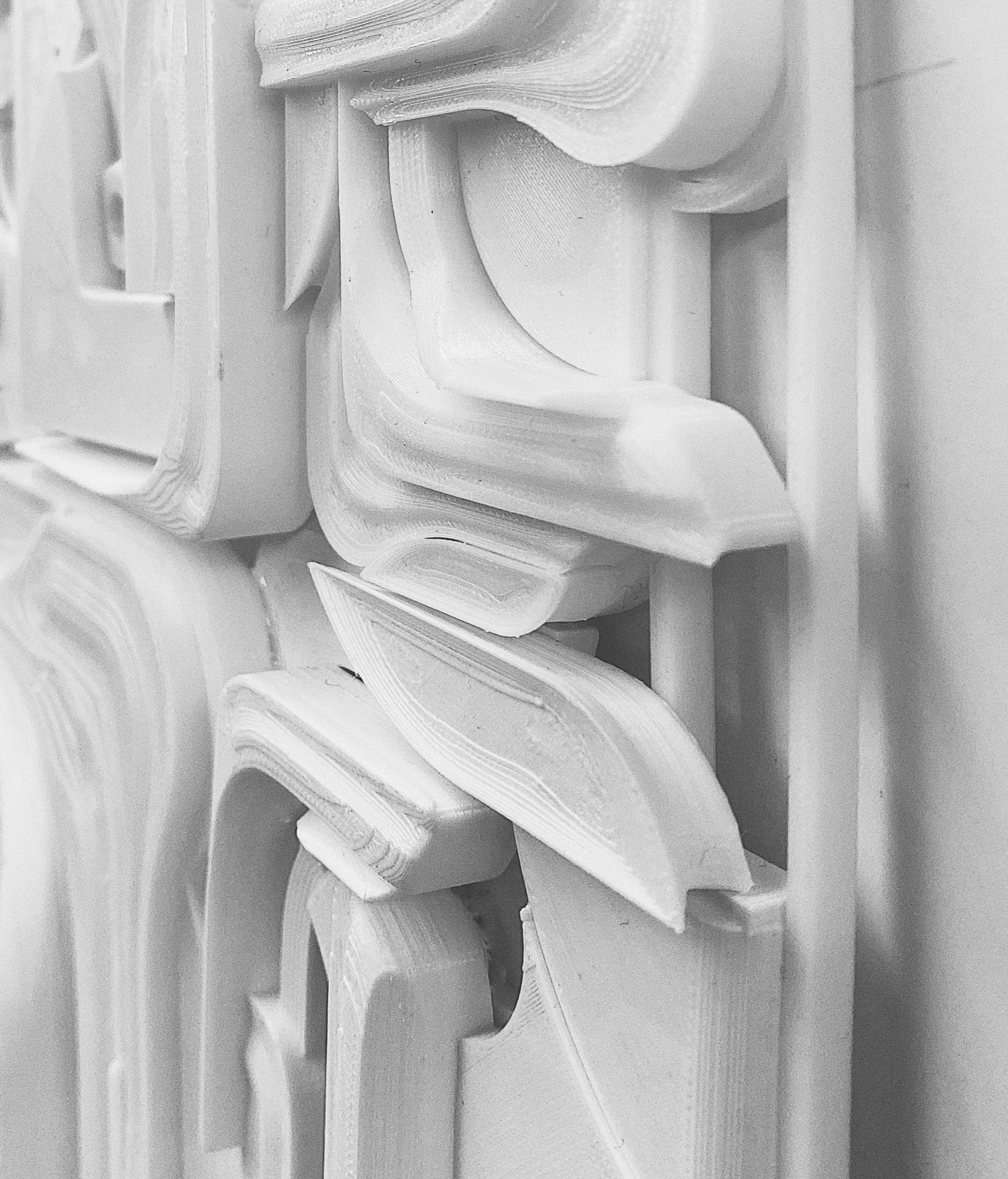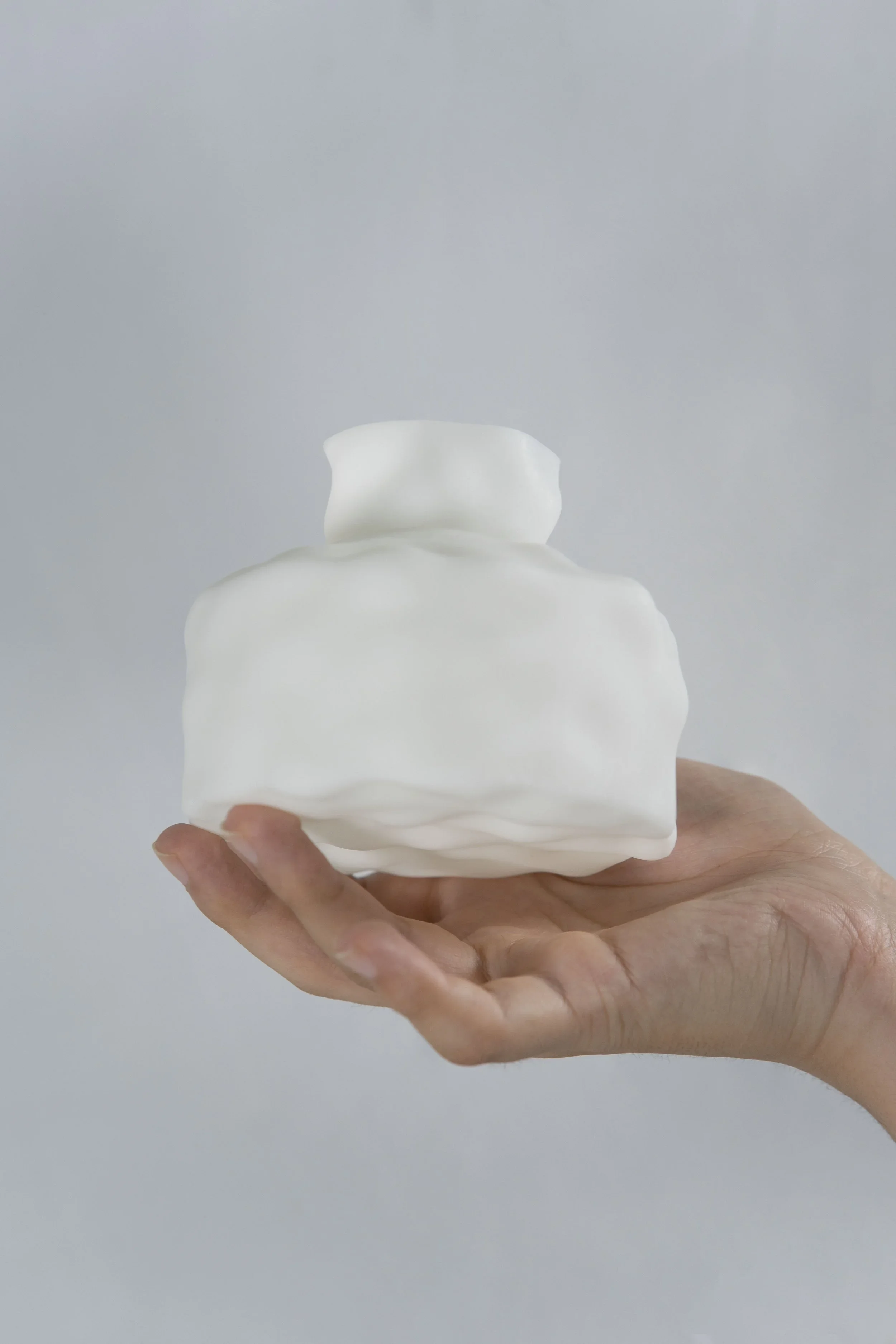10 Questions with Xuechen Chen
AL-TIBA9 ART MAGAZINE ISSUE19 | FEATURED ARTIST
Xuechen Chen, a dynamic architect and visionary visual artist, was born in China and is currently based in New York. She holds a B. ARCH degree from Pratt Institute and an M. Design degree from the University of Pennsylvania. Her creative journey is deeply rooted in the materialist architecture process, where she deconstructs and reassembles materials within the digital realm.
Xuechen's approach involves abstracting, deconstructing, and recomposing dimensions, transitioning from 3D to 2D, and experimenting with diverse perspectives. Xuechen Chen's innovative approach and commitment to pushing creative boundaries make her a rising force in different fields and backgrounds, leaving an indelible mark on the world of design and visual art.
Xuechen Chen - Portrait
ARTIST STATEMENT
Central to her work is the concept of layering, where elements like perspective, emotion, and media converge to create entirely new forms of digital art. Xuechen's belief in the power of layering leads to innovative, emotionally resonant creations. This fusion has opened up new vistas for her, enabling her to channel different backgrounds and different architectural sources into a formless yet impactful medium of artistic expression.
By merging her architectural insights with digital art, Xuechen aims to transform how we perceive and appreciate design in the digital age. She envisions a world where traditional creative boundaries are transcended and art becomes a vehicle for enhancing our overall experience. Xuechen Chen is an artist and architect pushing the boundaries of creativity, offering a unique perspective on the convergence of architecture and digital art.
Cyborg Urban Place Drawing, 2019 © Xuechen Chen
INTERVIEW
You studied architecture and design before turning to visual art. Please tell us more about your background. And what inspired you to approach art making?
I am currently an architect, designer, and visual artist based in New York. My journey started in my hometown, Nantong, a beautiful city in China with great views. As a child, I would doodle, capturing the beauty that surrounded me and sparking a lifelong fascination with art.
Immersed in the influence of artists and architects like Chiharu Shiota, Zaha Hadid, and many others, I have always believed that art always needed a spatial quality for its maximized impact. This belief fueled my mission to reshape my perspective on architecture and visual art, viewing them not as separate entities but as deeply intertwined and mutually translatable.
So, when I came to New York, I pursued architecture at Pratt Institute for my B.Arch degree and later at the University of Pennsylvania for my M. Design degree. The motivation was simple – to solidify my visions and explore the expansive boundaries of creative expression. Diverse art courses during my academic journey continued to shape my understanding of the symbiosis between art and design.
After graduating, I became an architecture designer in New York. As my career progressed, the rise of technologies like augmented reality (AR) and virtual reality (VR) opened my eyes to the artistic potential beyond materialistic design in architecture and a new thinking of bringing architecture into the digital world as a form of visual art.
Re-Facade Experiment, 3D print, 2020 © Xuechen Chen
How does your background in architecture influence your work as an artist?
My artistic approach is rooted in my architectural comprehension of space, engaging in the deconstruction and reconstruction of elements across diverse scales and dimensions, from urban to personal contexts. By embracing abstraction, deconstruction, and the recomposition of these varied dimensions and scales, I am able to navigate between 3D and 2D, exploring diverse perspectives in this creative journey. This method gives me a deep understanding of layered and cohesive artwork that seamlessly integrates my architectural insights with the expansive realm of digital art. This fusion serves as a conduit for expressing the fundamental essence of architecture in a formless yet impactful artistic medium.
What do you wish you knew about contemporary art before you got started?
I used to find contemporary art intimidating, thinking it might not resonate with everyone. Now, I appreciate its uniqueness in extreme individuality and its embrace of diverse forms and media. The broad and hybrid nature of contemporary is something I am interested in experimenting with in my work with different approaches and forms.
Urban Filter 1, 2021 © Xuechen Chen
Urban Filter 2, 2021 © Xuechen Chen
In your statement, you mention the importance of layering for your work. Can you tell us about the process of creating your work? How do you apply layering, and what does it help you achieve?
In my artistic process, I abstract diverse perspectives and concepts inherent in various scales and dimensions, endeavoring to layer them akin to a montage in both 3D and 2D realms. Employing techniques such as digital abstraction, 3D printing, and fabric printing, I strive to achieve a range of effects, reveling in the hybridization of different materials and design elements across different scales and experiences.
For me, the act of creating art mirrors the process of montage, a compression of distinct elements. Each element contributes unique meaning, and the layering maximizes the potential for diverse interpretations. Central to my artistic philosophy is the concept of layering, where elements like perspective, emotion, and media converge to birth entirely novel forms of digital art. I firmly believe in the transformative power of layering, capable of producing innovative and emotionally resonant creations that transcend conventional artistic boundaries.
Where do you get your inspiration, and how do you choose your sources?
Being an architect designer, my inspiration comes from my personal connections with spaces. I draw from the vibrant interplay between urban landscapes and human interactions, as well as the emotional depth woven into these experiences. My sources are chosen organically, rooted in a heartfelt appreciation for how built environments shape our lives. This personal connection fuels my creative journey, enabling me to translate the intimate relationships between architecture and human emotions into my art.
Urban Unfold Series - New York, fabric print, 2021 © Xuechen Chen
Urban Unfold Series - Rome, fabric print, 2021 © Xuechen Chen
Your primary outlet is digital art, and you state how your goal is to transform how we perceive and appreciate design in the digital age. What techniques do you use? And how did you choose those specifically?
I believe as we enter a digital era and with all the newer technology coming up, such as AR, VR, and even hologram, it is very natural to expand the art realm into space, which resonates with the art in architecture in the first place. I am just trying to balance a sweet spot that both can be virtually experienced and appreciated. I use all different techniques to bring art into virtual spaces, balancing between the tangible and the digital. There's a unique artistry in the transition between 3D and 2D, and my goal is to spotlight this creative space. Through my work, I want to inject a sense of art into the perceived practicality of architecture, bridging tradition with the transformative possibilities of the digital age.
Unfold New York, 2019 © Xuechen Chen
You also work with 3D printing. Why did you feel the need to transform your art into something tangible? And how does 3D printing help you in doing so?
Working with 3D printing is crucial for me because it transforms my art into something I can touch and feel. It's a way of expressing myself that blends technology with the freedom to create objects that seem impossible. I believe in the power of 3D printing to give a tangible form to my digital ideas, bridging the gap between the virtual and physical realms. It's not just about creating art; it's about pushing the boundaries and exploring new dimensions that traditional mediums can't capture.
Ultimately, what messages do you want to convey with your art?
Ultimately, with my art, I aspire to offer a fresh perspective on how we observe space and its connection to us. Through the material of layering, specifically in the digital realm, I aim to shift how we perceive and value design in the digital age. My vision is one where traditional creative limits are set aside, and art becomes a tool to elevate our overall experiences. As both an artist and architect, my commitment lies in pushing the boundaries of creativity, providing a distinctive viewpoint at the crossroads of tangible and digital art.
Skinfit Experience, 2019 © Xuechen Chen
Lately, we have seen many examples of AI-generated art. What do you think about it? And how do you think this will evolve in the future?
I hold a positive view of AI-generated art. Having explored it myself, I find it fascinating and believe it injects a fresh perspective into our creative process almost instantly. AI provides a quicker way for us to envision our concepts initially. In my perspective, AI is fundamentally a tool, much like Photoshop or others, helping us bring our creations to life rather than dictating the creative process. If we learn how to use its capabilities, there's a lot to gain. However, the concern of not abusing it or being overly dependent, is always present—keeping a balance is key, and always a challenge.
Lastly, what are you working on now? Do you have any new projects or exhibitions coming up?
I am preparing a VR project and hopefully can release it next year. It's a VR museum in the digital world, which I am very excited about.
Artist’s Talk
Al-Tiba9 Interviews is a promotional platform for artists to articulate their vision and engage them with our diverse readership through a published art dialogue. The artists are interviewed by Mohamed Benhadj, the founder & curator of Al-Tiba9, to highlight their artistic careers and introduce them to the international contemporary art scene across our vast network of museums, galleries, art professionals, art dealers, collectors, and art lovers across the globe.


























